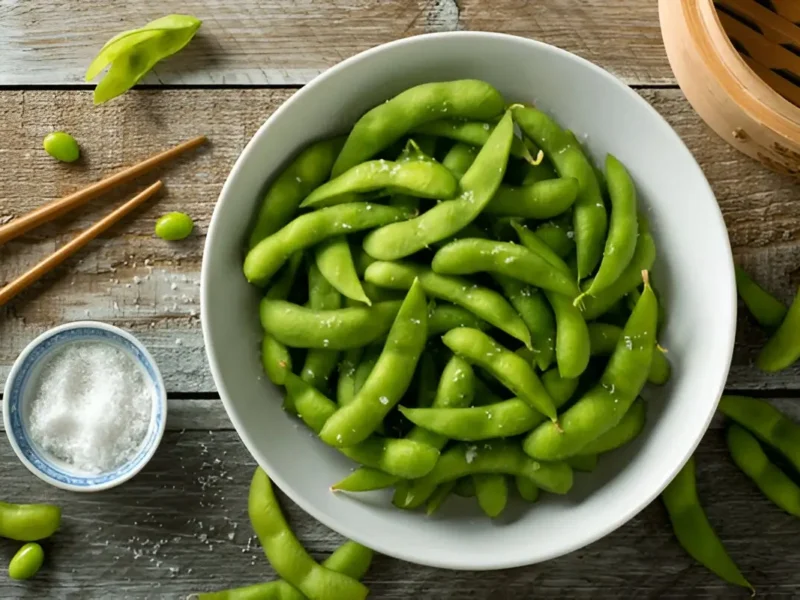You’ve seen those bright green pods in sushi joints or chilling in the frozen aisle, but you might be wondering—what does edamame taste like? Is it sweet? Is it nutty? Or does it taste like something else entirely?
This little legume has been making waves in the food world, and for good reason. It’s nutritious. It’s satisfying. And it’s a flavor chameleon. If you’re curious but hesitant to dive in, don’t worry—I got you. Let’s break down what makes edamame so tasty, how you’re supposed to eat it, and why it deserves a spot in your snack rotation.
What Is Edamame?
Edamame is young, green soybeans harvested before they fully mature. Unlike regular soybeans, which are left to harden and dry, edamame is picked while still soft and slightly sweet. This gives it its signature tender texture and fresh, nutty flavor.
Why Is It Popular?
Edamame has gained popularity worldwide as a nutritious snack and versatile ingredient. Whether steamed, boiled, or roasted, it’s packed with protein, fiber, and essential nutrients, making it a staple in plant-based diets and healthy eating plans.
Where Does Edamame Come From?
Originally from China and Japan, edamame has been part of Asian cuisine for centuries. Today, it’s enjoyed worldwide, often served as an appetizer in Japanese restaurants or used in various dishes like salads, stir-fries, and even dips.
What Does Edamame Taste Like?
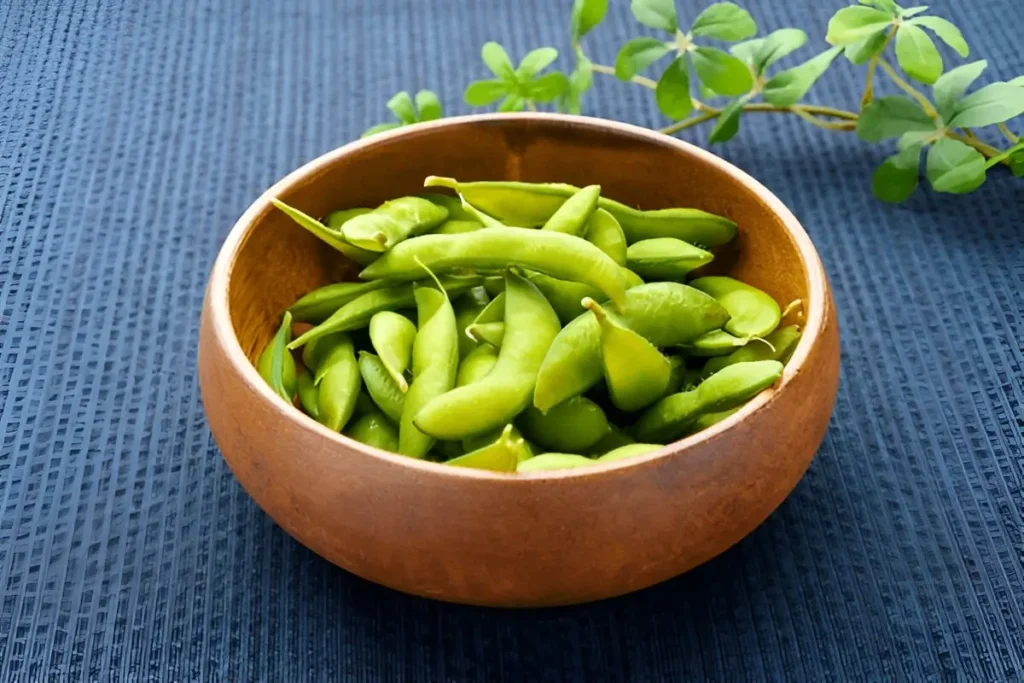
How would you describe the taste of edamame? Edamame has a mild, slightly sweet, and nutty flavor that’s honestly hard to pin down in just a few words.
Some say it’s like fresh green peas. Others compare it to a cross between green beans and almonds. But the truth is—edamame tastes like edamame. It’s one of those foods you just have to try for yourself.
- Sweetness? Yeah, but it’s more of a natural, plant-like sweetness—nothing sugary or artificial.
- Nutty? Definitely. Think raw almonds or lightly roasted cashews.
- Umami? A little. It’s got that subtle savory depth that makes you keep reaching for more.
When cooked just right, each bite is tender, slightly chewy, and oh-so-satisfying. Some people even say it reminds them of boiled peanuts but with a fresher, greener kick.
Does Edamame Taste Like Green Beans?
Sort of, but not exactly. If green beans had a glow-up and got a little creamier inside, you’d get close. Edamame is softer, nuttier, and slightly richer in flavor than your average snap bean.
The texture is also different—plumper, juicier, and more substantial. You’re getting a little more bite with each soybean, compared to the stringy crispness of green beans.
What Is Edamame Similar To?
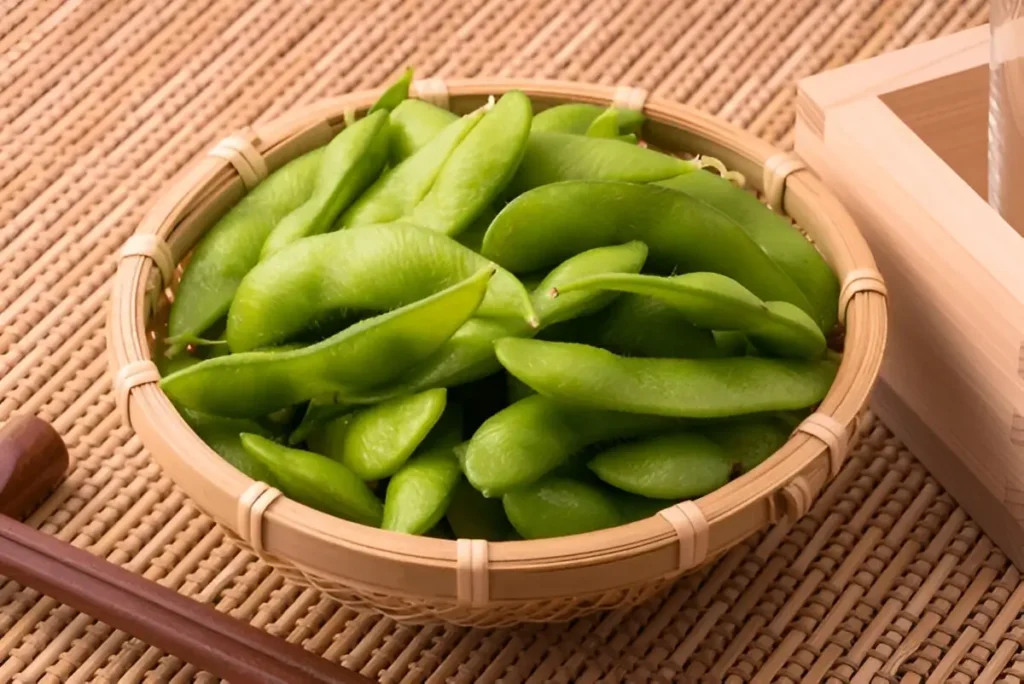
If you’ve never tried edamame, here’s what it’s closest to in terms of taste and texture:
- Fresh peas – That same light sweetness but with a nuttier vibe
- Boiled peanuts – Soft, slightly chewy, with a rich, earthy flavor
- Fava beans – Similar in texture but milder in taste
- Young green soybeans – Because well, that’s exactly what edamame is
Edamame is one-of-a-kind, but if you like any of the above, chances are you’ll love it.
How Are You Supposed to Eat Edamame?
If you’ve never had edamame before, you might be confused about how to eat it. Here’s the deal:
- In the pod – Most edamame comes boiled or steamed in its pod. Don’t eat the pod. Instead, pop the beans out with your teeth or fingers and discard the outer shell.
- Shelled – Some stores sell pre-shelled edamame, which is great for adding to salads, stir-fries, or snacking straight from the bowl.
- Seasoned – Toss it with sea salt, chili flakes, garlic, or even a drizzle of soy sauce to take the flavor up a notch.
Is Edamame Good for You?
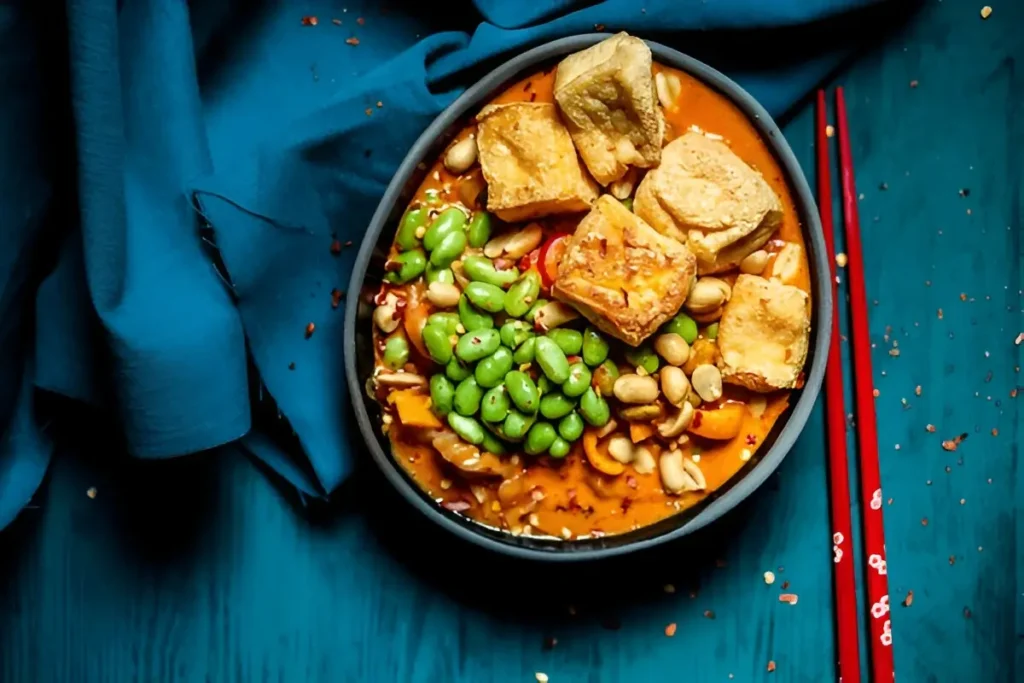
Yes. Big yes. Edamame is a nutritional powerhouse. It’s loaded with protein, fiber, and a bunch of essential vitamins and minerals. If you’re looking for a healthy snack that keeps you full and fuels your body, edamame is a no-brainer.
Edamame Nutrition at a Glance
- High in protein – Perfect for vegans, vegetarians, or anyone needing a plant-based protein boost.
- Packed with fiber – Great for digestion and keeping hunger at bay.
- Rich in vitamins & minerals – Loaded with iron, calcium, and vitamin K.
- Low in calories – A guilt-free snack that actually satisfies.
Does Edamame Have Protein?
Absolutely. Edamame is one of the best plant-based sources of protein. A single cup packs around 18 grams of protein, making it a fantastic meat alternative.
Plus, it’s a complete protein, meaning it contains all nine essential amino acids your body needs. Pretty cool for a little green bean.
Is Edamame Good for Weight Loss?
If you’re trying to lose weight, edamame is a great choice. It’s high in protein and fiber, both of which help keep you full longer. That means fewer cravings, less snacking, and better portion control. Plus, it’s low in calories but still satisfying—a rare combo.
Why Is Edamame Expensive?
Good question. Edamame tends to be pricier than other beans and legumes because:
- It’s harvested young, meaning farmers have to pick it at just the right time.
- Most edamame is imported, especially in the U.S., where production is limited.
- It’s often sold fresh or frozen, which increases storage and shipping costs.
It’s a little more expensive than your average bag of lentils, but trust me—it’s worth it.
How to Cook Edamame
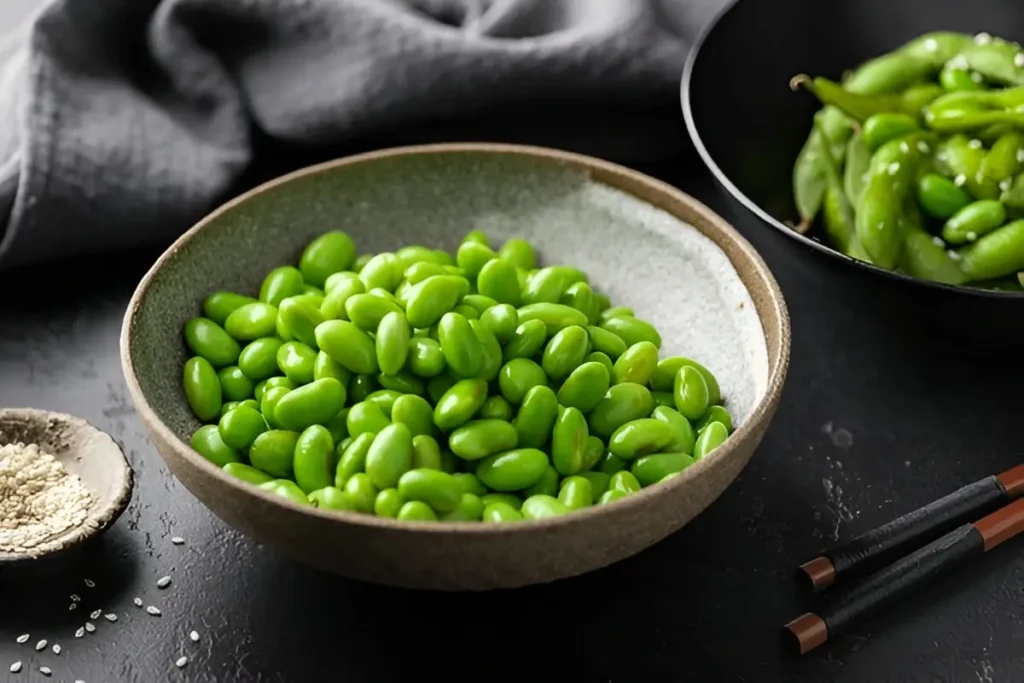
Edamame is super easy to make. Here are the best ways to cook it:
Boiling
- Bring salted water to a boil
- Toss in the edamame (pods or shelled)
- Cook for 5-7 minutes until tender
- Drain & season with sea salt
Steaming
- Place edamame in a steamer basket over boiling water
- Cover and steam for 5 minutes
- Sprinkle with salt or dip in soy sauce
Roasting
- Toss shelled edamame with olive oil & seasoning
- Spread on a baking sheet
- Roast at 375°F for 20-25 minutes
Edamame Recipes to Try
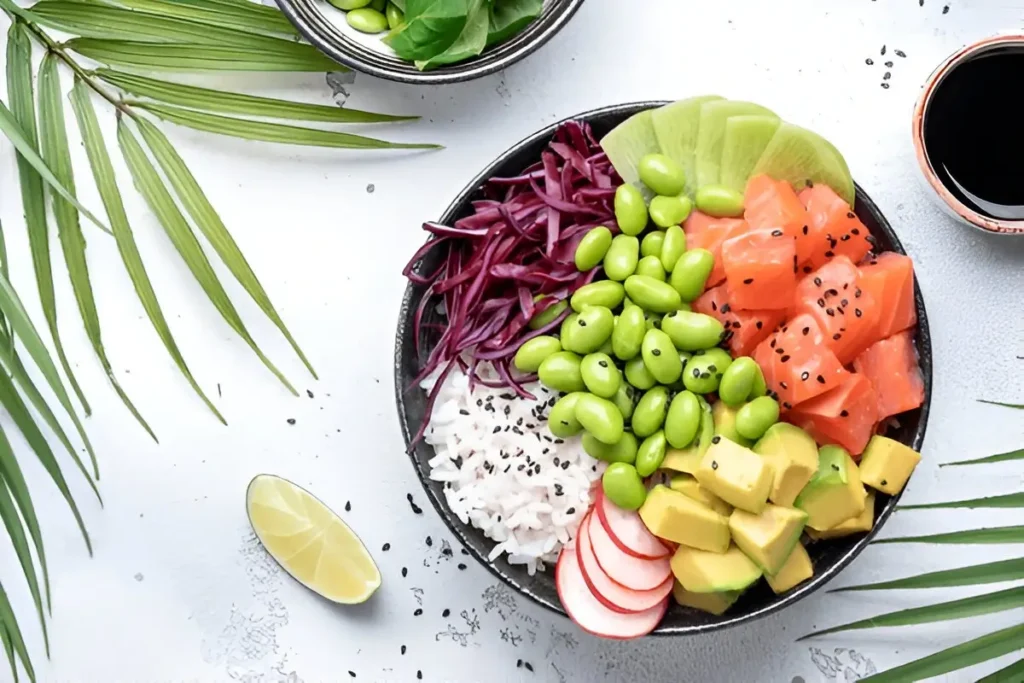
Want to get creative with edamame? Try these:
- Spicy Garlic Edamame – Toss with chili flakes, garlic, and soy sauce
- Edamame Hummus – Blend with tahini, lemon, and olive oil
- Edamame Stir-Fry – Sauté with veggies, tofu, and sesame oil
- Crispy Roasted Edamame – Season and bake for a crunchy snack
Explore Cuisine Organic Edamame & Mung Bean Fettuccine
Edamame Side Effects
Edamame is healthy for most people, but there are a few things to keep in mind:
- Soy allergies – If you’re allergic to soy, steer clear
- Digestive issues – Some people experience bloating or gas
- Estrogen-like effects – Soy contains phytoestrogens, which can affect hormone levels in large amounts
Edamame vs. Other Beans
How does edamame compare to other popular beans like chickpeas, black beans, or lentils? While all are great sources of protein and fiber, edamame has a unique combination of nuttiness and slight sweetness that sets it apart.
It’s also a complete protein, unlike most other beans, making it an excellent plant-based protein source.
Best Ways to Season Edamame
Plain edamame is delicious, but adding seasoning takes it to another level. Here are some simple ways to enhance the flavor:
- Sea salt & black pepper – Classic and simple.
- Garlic & chili flakes – Adds a spicy, savory kick.
- Soy sauce & sesame oil – Perfect for an umami boost.
- Lemon juice & parmesan – Unexpected but super tasty.
Edamame in Different Cuisines
Though most commonly associated with Japanese cuisine, edamame appears in various international dishes:
- Japanese – Served with sea salt or in miso-based dishes.
- Chinese – Used in stir-fries and dumpling fillings.
- Western – Added to salads, grain bowls, and pasta dishes.
Can You Eat Edamame Raw?
Nope, raw edamame is not safe to eat. The beans contain natural toxins that can cause digestive issues. Always boil, steam, or roast them before eating.
Do you eat edamame pods?
Generally, edamame pods are not eaten. The pods are tough and fibrous, and they’re not really edible. People typically just squeeze the beans out of the pods to enjoy them!
Can you eat edamame skin?
The skin on the individual edamame beans is perfectly safe to eat! It’s not typically eaten on its own because it can be a bit tough, but it’s not harmful. Most people just pop the beans out of the skin.
Can you eat shelled edamame?
Yes! Shelled edamame (the beans) are the part you’re supposed to eat. They’re packed with protein, fiber, and are a great snack or addition to dishes.
Does Edamame Taste Like Green Beans?
Sort of, but not exactly. If green beans had a glow-up and got a little creamier inside, you’d get close. Edamame is softer, nuttier, and slightly richer in flavor than your average snap bean.
The texture is also different—plumper, juicier, and more substantial. You’re getting a little more bite with each soybean, compared to the stringy crispness of green beans.
Final Thoughts: Should You Try Edamame?
If you’ve never had edamame before, give it a shot. It’s delicious, nutritious, and easy to prepare. Whether you eat it as a snack, toss it into a salad, or blend it into a dip, you won’t regret adding this green gem to your diet.
So, what does edamame taste like? A little sweet. A little nutty. And a whole lot delicious. Try it and see for yourself.
